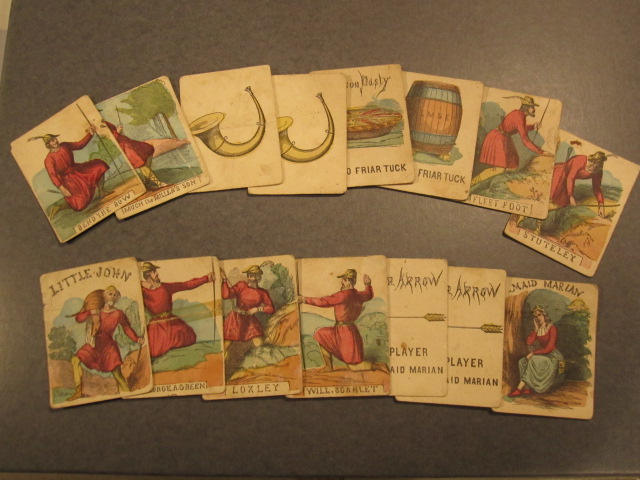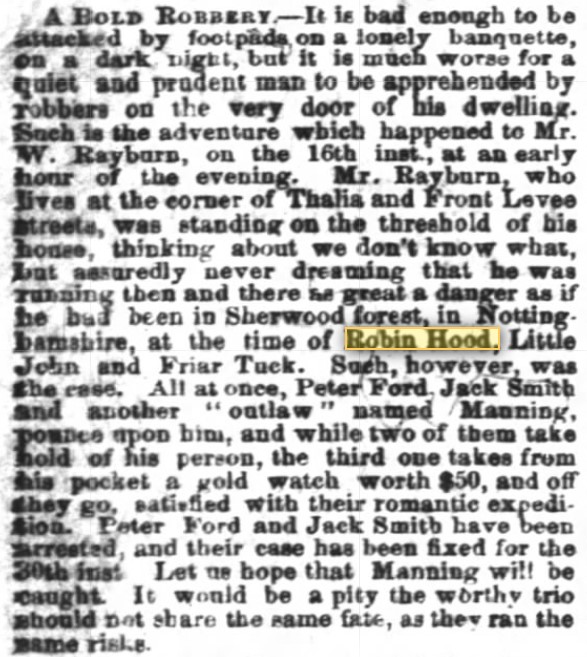Robin Hood & The Civil War: A Child’s Game? (Part 4)

(From The Valentine, used with permission)
Check this out! A set of children’s playing cards from the Civil War era, preserved by The Valentine Museum in Richmond. I own a debt of gratitude to fellow ECW member Bert Dunkerly for helping me track the artifact photos and directing me to The Valentine. I had seen the cards on display at Tredegar years ago and then had to find them again after the summer of Robin Hood.
Children’s books of the era also featured the stories of Robin Hood, along with fairy tales, and fantasy-style sagas.
Throughout 1862 a play called “Robin Hood” appeared in New York theaters. Here’s an advertisement from the December 16 edition of the New York Daily Herald. (An opera by the same title name seems to have been playing in Britain and the northern part of the U.S. during the early 1860’s as well.)
Now for some interest examples of Robin Hood analogies in newspaper reporting:
Here’s a crime robbery reported with an unfavorable comparison to the English outlaw and his merry men from The Times-Picayune from New Orleans on January 18, 1861:
How about some war news? Here is some fanciful reporting following Lincoln’s announcement of the Emancipation Proclamation in the New York Herald on September 24, 1862:
And finally, here is one of my favorite finds so far! Stonewall Jackson is compared to Friar Tuck during the Maryland Campaign of 1862. (New York Daily Herald, September 14, 1862)
Now, that we’ve had some fun looking at items or references related to Robin Hood from the Civil War era, it will be time to change angles and consider what we can learn about memory from Olde England to the Civil War era and from the Civil War era to our own times.
To be continued…




It seems that the hero of the Confederacy was most certainly clothed in an Englishman’s garb. Villains, on the other hand, were aligned with the sheriff of Nottingham and undoubtedly clothed in blue. I’m not sure this is a matter of imagination or imagery. But, our Southern “friends” were definitely aligned themselves with the heroes of English literature, not to mention the Son of Man.
Good point. It’s something I keep finding in different primary sources. The ideal of chivalry had all kinds of undertones. At this point, I’m not quite sure if the South knew what to do with Robin Hood. He doesn’t exactly fit into their social ideas as the champion of the middle class or the oppressed in the Scott characterizations. I’m still looking into this aspect as a “hobby study.”